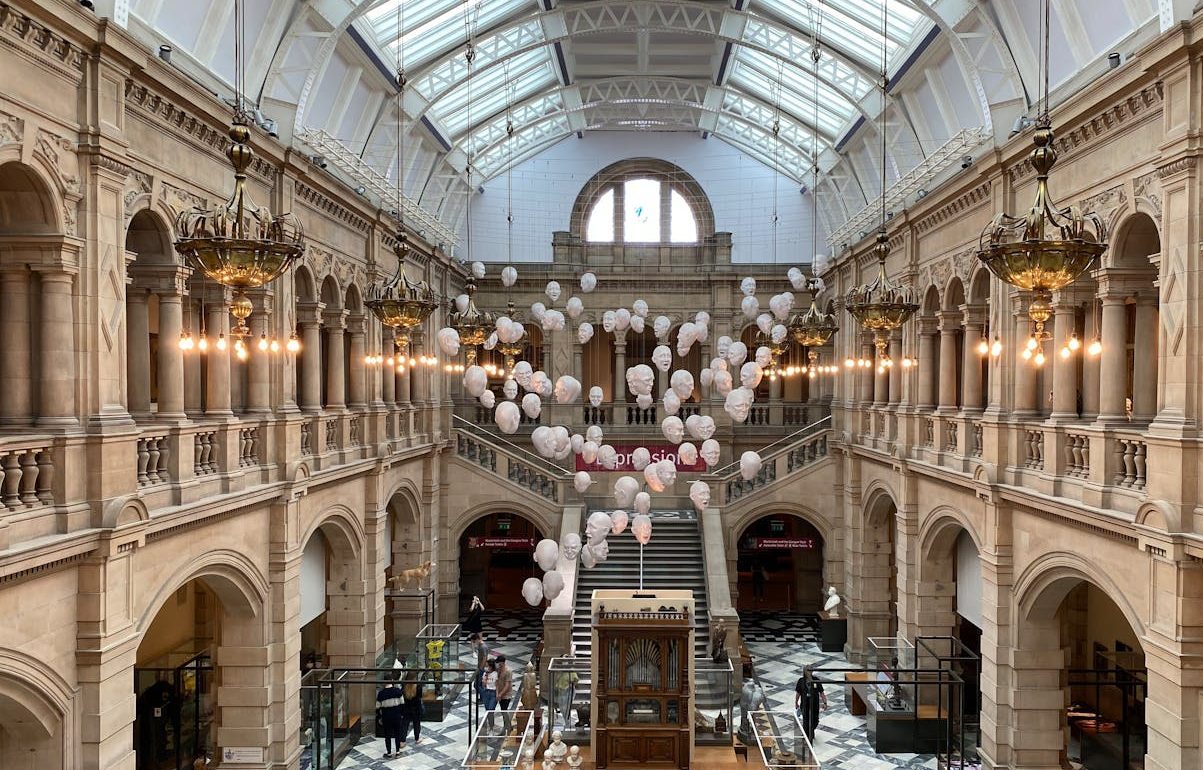The building itself is a striking example of Spanish Baroque-style architecture, designed by architects John W. Simpson and E.J. Milner Allen. Its red sandstone exterior and twin towers are iconic, set amid lush parklands by the River Kelvin. Opened in 1901 as part of the Glasgow International Exhibition, Kelvingrove has since evolved into a major repository of art and history, offering a unique journey through Scottish and global culture.
The museum’s collections are vast and varied, showcasing over 8,000 objects across 22 galleries. Highlights include Salvador Dalí’s *Christ of Saint John of the Cross*, one of the museum’s most famous pieces, which draws art lovers from around the world. Other prominent artworks include pieces by the Old Masters, such as Rembrandt and Botticelli, and by French Impressionists like Monet. Kelvingrove also features a rich array of Scottish art, including works by the Glasgow Boys and the Scottish Colourists, reflecting the country’s vibrant artistic traditions.
In addition to fine art, Kelvingrove houses extensive exhibits on Scotland’s natural history, cultural heritage, and historical artifacts. Among these is the life-size Spitfire plane that hangs in the museum’s central hall—a tribute to Glasgow’s role in World War II. The museum also offers displays on ancient Egypt, wildlife, arms and armour, and one of the finest organ collections in Scotland, with daily organ recitals that draw enthusiastic audiences.
Free to enter, Kelvingrove has become a welcoming space for learning and inspiration, attracting millions of visitors annually. Its blend of art, history, and interactive exhibits appeals to all ages, making it a cornerstone of Glasgow’s cultural life and a true national treasure.


